Content from the Brookings Doha Center is now archived. In September 2021, after 14 years of impactful partnership, Brookings and the Brookings Doha Center announced that they were ending their affiliation. The Brookings Doha Center is now the Middle East Council on Global Affairs, a separate public policy institution based in Qatar.
On Monday 5 June, Saudi Arabia, the United Arab Emirates (UAE), Bahrain, and Egypt cut ties with the Gulf state of Qatar, claiming Doha’s regional policies were fueling extremism and terrorism. Within days, other states severed or downgraded ties and the rift appeared to be widening.
A week earlier, Gulf media—including social media—had erupted amid reports that Qatari Emir, Tamim bin Hamad al-Thani, made critical remarks against America in a speech, as well as offered support for Iran and backing to Hamas and the Muslim Brotherhood. Qatari officials denied the reports and countered that state media had been hacked. As that crisis quickly turned into a rift with Qatar’s Gulf and Arab neighbors, the need for serious mediation to head off further trouble became obvious.
2014 Redux?
The Gulf Cooperation Council (GCC), like other regional organizations, has seen its share of splits and disagreements. Past differences have blown up over border demarcation, energy exploitation, and foreign policy approaches. The present crisis, however, is by far the worst and most threatening in terms of politics, security and economy. In 2014, a diplomatic rift broke out between Saudi Arabia, the UAE, and Bahrain on one side, and Qatar on the other. Like the current dispute, that too centered on allegations about Qatari foreign policy, with a GCC statement charging that Qatar failed to “implement a November 2013 agreement not to back anyone threatening the security and stability of the GCC whether as groups or individuals—via direct security work or through political influence, and not to support hostile media.” In the spring of 2014, the three GCC states ordered their ambassadors out of Doha.
The rift lasted some 9 months, and in the meantime, concerns arose about the future of the GCC and diplomatic relations more widely. One reason the 2014 rift did not spiral further was that non-aligned local actors played a mediating role. Kuwait, in particular, played a primary part in managing and resolving the 2014 dispute, and is already playing that role again in the current crisis.
The meaning of mediation
Mediating conflict is never easy. Nevertheless, traditional mediating approaches—including applying tested methods of bargaining and negotiation by local leaders whose authority does not threaten the key adversaries—could work in this particular context. Certainly U.S. Secretary of State has called for mediation as a way out of the present predicament.
Inter-generational fissures—among the ruling elite of the GCC as evident in the “Crown Prince” factor—are emerging. Hence, an approach recognizing that elders can still command deference and authority among the power bids of young crown princes and others is particularly effective. The diplomatic rift we see today involves power structures that rely on family and tribal fealties that have transcended modern borders. Those power structures are also built on rigid cultural conceptions of power, bargaining, mediation, and pride.
Religion and timing may also play a role: Forgiveness and reconciliation are seen as cornerstones of the holy month of Ramadan. Arab and Muslim leaders can invoke such appeals to seek a route out of the current dispute in ways no others can legitimately claim to.
Shuttle Sheikh
One individual who is clearly equipped to undertake this mediation role is the octogenarian Sheikh Sabah al-Sabah, the Emir of Kuwait. This apparently indefatigable local leader played a vital role in the efforts to resolve the 2014 dispute. In the latest rift, he has again shuttled between Gulf capitals. He is more than a mere intermediary—rather, he can leverage Arab and Gulf-based cultural, religious, and identity norms of appeal that resonate with all sides.
Kuwait does not threaten any of the principal protagonists in this current conflict. Kuwaiti mediation reflects an important culturally empathetic approach to the dispute that in these early stages can facilitate dialogue and conciliation. Because of its role in solving past disputes Kuwait—as opposed to other state actors—is an embedded mediator. Its leadership understands the political, tribal, familial, religious and cultural nuances of power in the GCC region.
In 2014, the Emir actively pursued and led rounds of negotiations that culminated in the return of Arab ambassadors to Qatar’s capital and to a more public signal at the GCC Summit that differences had been overcome. Today, al-Sabah faces many of the same themes and issues of contention. However, this time around it is unclear whether international actors such as the United States or European Union will help or hinder conflict management.
Routes out of conflict
There is an important consensus that the current GCC crisis is damaging for all the parties involved and, therefore, that there is an imperative to resolve it sooner rather than later. The economic cost of the dispute between Qatar and its Gulf neighbors and others may well spiral into billions of dollars as trade and investment revenues are affected. Qatar is the richest country in the world per capita, but neither it nor its Gulf neighbors should underestimate the impact of the rift on their domestic economies at a time when energy prices are low and economic right-sizing projects have been necessary.
Local Arab leaders—more so than parties from outside the region—can play a crucial mediating role in ending the downward spiral. Past disputes, including in 2014, have relied on active mediation and traditional bargaining approaches by Arab state actors such as Kuwait. This is more likely to be successful because Arab mediators possess an authority that resonates with local norms in dispute resolution. They understand the power of particular appeals to dimensions of local, Gulf-based identities, including patrilineal networks and the role of Islam.
No matter how invested non-Arab, outside parties may become in resolving this conflict, they are not the best actors for a mediating role. President Trump declared early in the conflict—via a series of tweets—that he sided with Qatar’s rivals. President Trump then attempted to intervene through direct phone calls to them, including to offer to host resolution efforts at the White House. U.S. positioning on the crisis has also been damaged by apparent incoherence in contradictions between statesments from Secretary of State Tillerson and President Trump’s statements and tweets. This incoherence distracts from the efficacy of any prospective mediating role that the U.S. could play. Furthermore, this undermines the principle of neutral arbitration, which is central to effective conflict management.
Even if the Trump administration does decide to play a role in resolving the worst crisis to affect the GCC, then involvement by Kuwait or another appropriate local actor would still prove helpful. But overall, the best approach would be for Washington to stand back and adopt a more impartial stance, in order to give regional dispute resolution efforts a real chance to work.



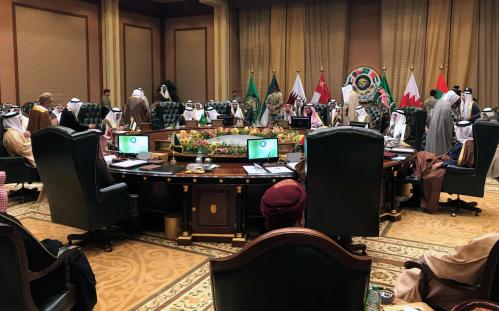
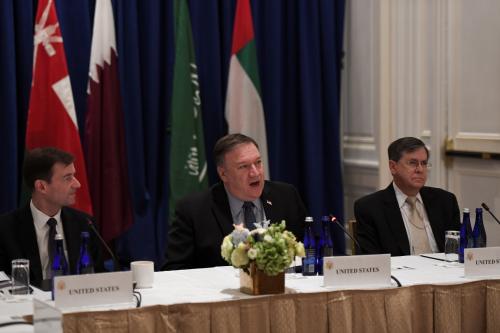
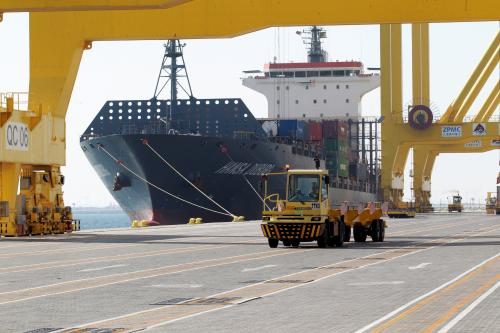

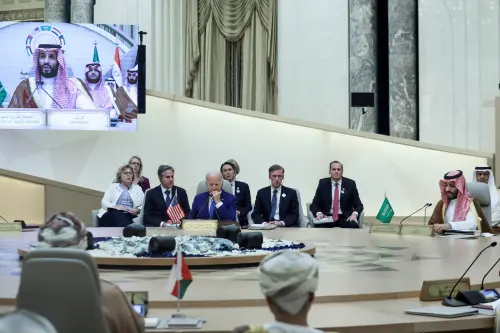
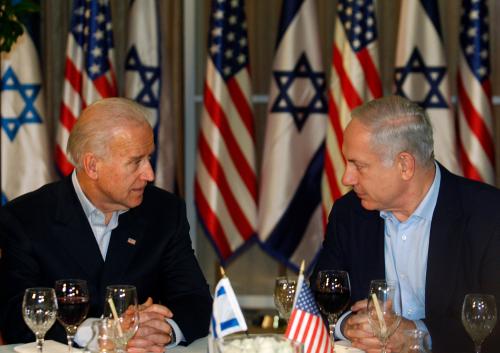
Commentary
GCC crisis: How to resolve the diplomatic rift
June 15, 2017